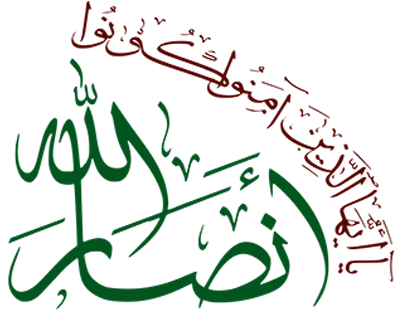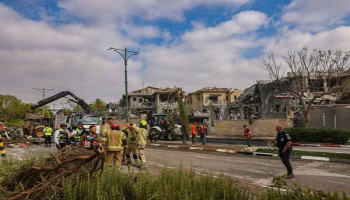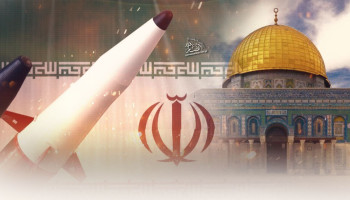28 Dhul Hijjahjjah 1446
The Zionist entity was initially conceived as a Western project with a clear and strategic role—one that continues to this day: to wage war against national liberation movements across the Arab and African world and subjugate those regions to Western dominance. This mission is executed through various mechanisms, including military aggression, targeted assassinations, the destruction of research centers and scientific infrastructure, normalization with regional powers, sowing discord among neighboring states, supporting terrorist groups, and more—tools the Zionist entity continues to employ.
In return for this role, the Zionist entity receives extensive financial, economic, scientific, and technological assistance from Western countries, particularly the United States. This generous backing has granted it superiority over many surrounding Arab states.
Western countries, moreover, are committed to the military protection of the entity. This protection has manifested prominently during the Arab-Israeli wars, including the Tripartite Aggression against Egypt in 1956, the Naksa of June 1967, the October War of 1973, the invasion of Beirut in 1982, the 2006 Lebanon War, and the subsequent conflicts with resistance movements in Lebanon and Palestine, culminating in the Battle of Seif al-Quds and the ongoing ramifications of the al-Aqsa Flood battle.
In these critical moments, Western and American protection of the Zionist entity remains an integral commitment. However, since the last major war involving multiple Arab parties in the 1970s, sweeping regional shifts have taken place. The victory of the Islamic Revolution in Iran in 1979, the rise of resistance in Lebanon, and the waves of intifada and resistance in Gaza have all led to a notable shift in the regional security landscape.
There is now a visible Israeli decline. From the days of the 1967 war, when the entity occupied the West Bank, Gaza, Sinai, and the Golan Heights, to the present-day al-Aqsa Flood battle—where it failed to crush a besieged resistance in Gaza—the difference is stark. Previously, the Zionist entity withdrew from southern Lebanon and Gaza, unable to maintain prolonged occupation. Despite its destructive capabilities, as seen in Gaza and southern Lebanon, its effectiveness on the ground has eroded.
It is now evident that the Zionist enemy weakens with each passing decade and even year, while resistance movements and allied states grow stronger. This emerging reality has rendered the Israeli entity less capable of fulfilling its strategic function, and its protection has become increasingly costly for the West—both financially and politically. As a component of the broader Western system, the Zionist entity’s decline mirrors the relative decline of the Western bloc within the global power structure.
Changing Dynamics in U.S.-Israeli Security Relations
Unconditional U.S. support for "Israel" has long been a cornerstone of American foreign policy, regardless of administrations or global circumstances. However, under Trump—especially after his return to office—emerging contradictions have surfaced between this unwavering support and the shifting strategic and operational dynamics of the Arab-Israeli conflict, particularly with the rise of the Resistance Axis as a multi-faceted regional power.
These contradictions have led to a credibility crisis for the U.S., reducing its ability to influence the rules of engagement or broker political settlements. American aggression in Yemen, for instance, failed to diminish the capabilities of the Yemeni armed forces. On the contrary, it revealed the limitations of American military power in shaping the regional theater. The May 4, 2025, strike from Sana'a on Lod Airport came as a shocking blow that shattered the Israeli enemy’s narrative of American protection and deeply unsettled its security and military establishments. Washington's failure to deliver a decisive response—resorting instead to symbolic or ineffectual punitive measures—culminated in a ceasefire agreement with Sana'a and a pivot to protecting its own shipping interests in the Red Sea, even at Israel’s expense.
Although the United States did not officially announce direct military involvement in the Israeli attack on Iran, all signs point to deep and premeditated coordination between Washington and Tel Aviv. The assault was carried out with American intelligence support—via satellites and drones—and was accompanied by unusual activity in U.S. military command centers in the Gulf, as well as partial evacuations from certain American embassies. President Trump confirmed that Tehran had received warnings 60 days in advance and even called on the residents of Tehran to evacuate as a form of psychological pressure. These events indicate that the Israeli attack was part of a broader American strategy aimed at forcing Iranian concessions in the nuclear file.
Still, despite the significance of such American support, it has not been decisive in safeguarding the entity or securing victory for Netanyahu. After ten days of warfare, the U.S. was compelled to directly intervene with a limited operation targeting three Iranian nuclear sites—Natanz, Isfahan, and Fordow. Yet these were largely symbolic strikes and failed to cripple Iran’s nuclear program, which has grown beyond physical facilities.
This limited and calculated intervention demonstrated a clear U.S. reluctance to escalate toward full-scale war. Iran responded by targeting Al-Udeid Air Base in Qatar—the largest U.S. base in the region and the headquarters of U.S. Central Command operations—underscoring the limits of American power. The era of U.S. invasions akin to those in Iraq and Afghanistan appears to be over.
The Trump administration’s handling of the evolving conflict between the Zionist entity and the Resistance Axis has been contradictory. On one hand, it raises the bar of support for the entity both diplomatically and militarily—even approving the extension of aggression, as seen in the recent case of Iran. On the other hand, it exhibits hesitation when it comes to engaging in open-ended wars—whether in Yemen or in direct confrontation with Iran. This sends a clear signal to Washington’s allies and to the Zionist entity: American support may now be confined to rhetoric or limited strikes, lacking a long-term strategy.
These contradictions have generated a crisis within Zionist decision-making circles. Tel Aviv now faces a dilemma: either rely on limited American support that fails to shift the balance of power or proceed with unilateral regional escalation. Netanyahu chose the latter, attempting to drag the U.S. into a full-blown war with Iran. But the attempt failed. His unilateral decision to attack Iran—backed by his ruling political coalition—was a high-risk gamble. Israeli security assessments prior to the attack were already recommending a reassessment of ties with Washington, or at least a reduced dependency on the U.S. in managing conflicts with resistance forces. This Israeli strategic shift is expected to continue gaining traction.
Unconditional U.S. Support No Longer Guarantees Deterrence
Absolute American backing for Israel is no longer a sufficient guarantee for deterrence or victory. In fact, it has become a strategic liability that deepens Washington’s isolation and bolsters the legitimacy of the Resistance Axis across the Arab and Islamic world. With the Axis growing stronger and expanding its geographical presence—from the Strait of Hormuz to the Mediterranean in Gaza, and across to the Red Sea and Yemen—the emerging geopolitical equation is forcing the United States to make a choice: either reassess its military support for Israel amid a genocidal war and aggression against Iran or continue down a path of military and political backing that fails to deliver the results desired by the Zionist entity, leading instead to open-ended escalation and further erosion of American hegemony.
The American crisis of dominance is not a passing phase; it reflects the structural limitations of the capitalist order itself—its inability to maintain control without resistance. Peripheral states are no longer passive arenas for intervention but have become historical actors in their own right, capable of imposing new realities and partially freeing themselves from the constraints of global centers of power. This shift is particularly potent when these states effectively seize the opportunity presented by a faltering center to craft independent foreign policies and build autonomous development agendas.
These developments are merely the beginning of a transitional phase in the global order—one in which traditional definitions of power, sovereignty, and international relations are being rewritten, far removed from the U.S.-driven unipolar dominance that shaped past decades.







